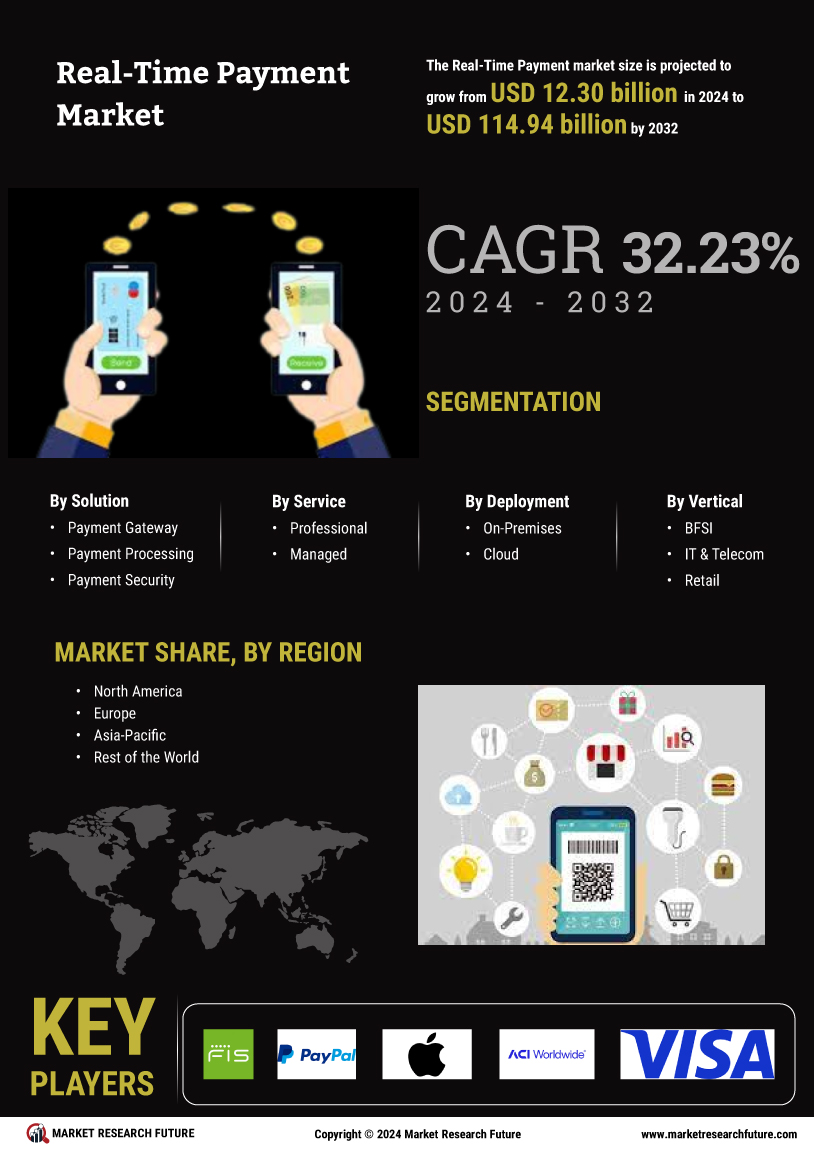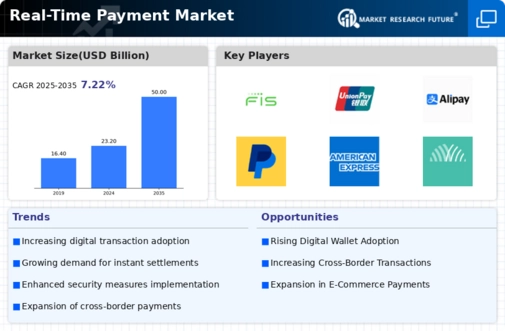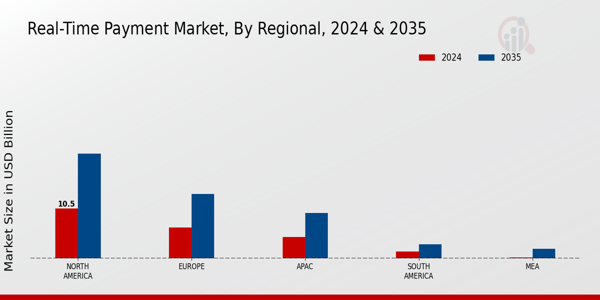Increased Focus on Financial Inclusion
The Real-Time Payment Market is also being driven by an increased focus on financial inclusion. Many regions are striving to provide unbanked and underbanked populations with access to financial services. Real-time payment solutions offer a viable pathway to achieve this goal, as they can facilitate low-cost transactions and enable individuals to participate in the formal economy. Recent initiatives by governments and NGOs aim to leverage technology to expand access to financial services, thereby promoting economic empowerment. As these efforts gain traction, the Real-Time Payment Market is expected to grow, driven by the need to create inclusive financial ecosystems.
Regulatory Support for Real-Time Payments
Regulatory support is emerging as a crucial driver for the Real-Time Payment Market. Governments and regulatory bodies are increasingly recognizing the importance of real-time payment systems in promoting financial inclusion and economic growth. Initiatives aimed at standardizing payment systems and ensuring interoperability among different platforms are gaining momentum. For example, several countries have implemented frameworks that encourage the adoption of real-time payment solutions among financial institutions. This regulatory backing not only fosters innovation but also instills confidence among consumers and businesses in utilizing these systems. As a result, the Real-Time Payment Market is likely to benefit from enhanced regulatory support in the coming years.
Expansion of E-Commerce and Digital Services
The Real-Time Payment Market is significantly influenced by the expansion of e-commerce and digital services. As online shopping continues to gain traction, the need for efficient payment solutions becomes critical. Recent statistics indicate that e-commerce sales have seen a steady increase, with projections suggesting a growth rate of over 15 percent annually. This trend necessitates the integration of real-time payment systems to facilitate seamless transactions. Retailers and service providers are increasingly adopting these solutions to enhance customer experience and reduce cart abandonment rates. The Real-Time Payment Market is thus poised for growth, driven by the imperative to support the evolving landscape of digital commerce.
Technological Advancements in Payment Systems
Technological advancements are playing a pivotal role in shaping the Real-Time Payment Market. Innovations such as blockchain technology, artificial intelligence, and machine learning are enhancing the efficiency and security of payment systems. These technologies enable faster transaction processing and reduce the risk of fraud, which is paramount in the current digital age. For instance, the implementation of blockchain in payment systems has the potential to streamline cross-border transactions, making them faster and more cost-effective. As these technologies continue to evolve, they are likely to drive further adoption of real-time payment solutions, thereby propelling the Real-Time Payment Market forward.
Growing Consumer Demand for Instant Transactions
The Real-Time Payment Market is experiencing a surge in consumer demand for instant transactions. As individuals increasingly seek immediate access to their funds, the necessity for real-time payment solutions becomes more pronounced. According to recent data, nearly 70 percent of consumers express a preference for instant payment options over traditional methods. This shift in consumer behavior is driving financial institutions to innovate and enhance their payment systems. The expectation for instantaneous transactions is not limited to personal finance; businesses are also adapting to this trend, as they recognize the competitive advantage of offering real-time payment solutions. Consequently, the Real-Time Payment Market is likely to expand as more entities strive to meet this growing demand.


















Leave a Comment